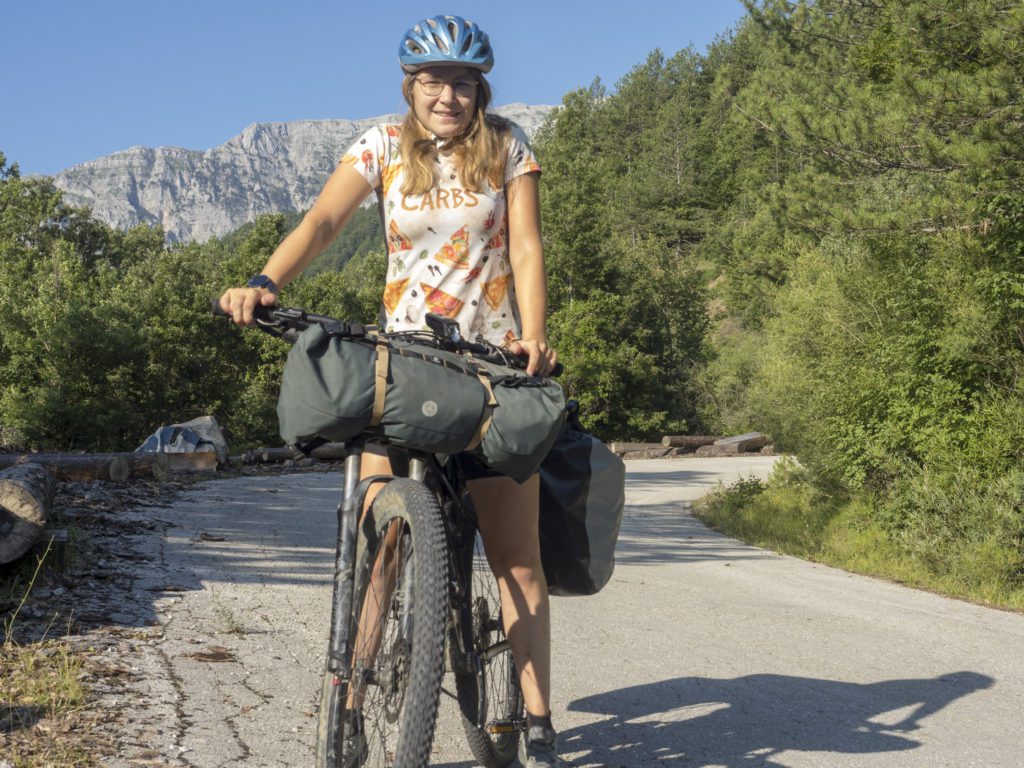I recently went on a short bicycle tour in Spain with my boyfriend, who has never travelled by bike and doesn’t cycle a lot. Helping him prepare for the adventure brought back memories from my early days of bike travel. It made me realise how many questions a newbie cycle tourer might have. To help you kickstart your journey, I’ve put together my top tips to help you enjoy your first cycle tour to the fullest.
Why Do I Travel by Bike? The Benefits of Bike Touring
Bicycle touring allows you to immerse yourself in the world around you, slow down, and embrace each part of your journey rather than focusing on moving from one destination to another. There is no better feeling than feeling the wind on your face, observing life in places you wouldn’t have visited otherwise, and having a simple daily routine: get up, ride your bike, eat, ride some more, and find a place to sleep.
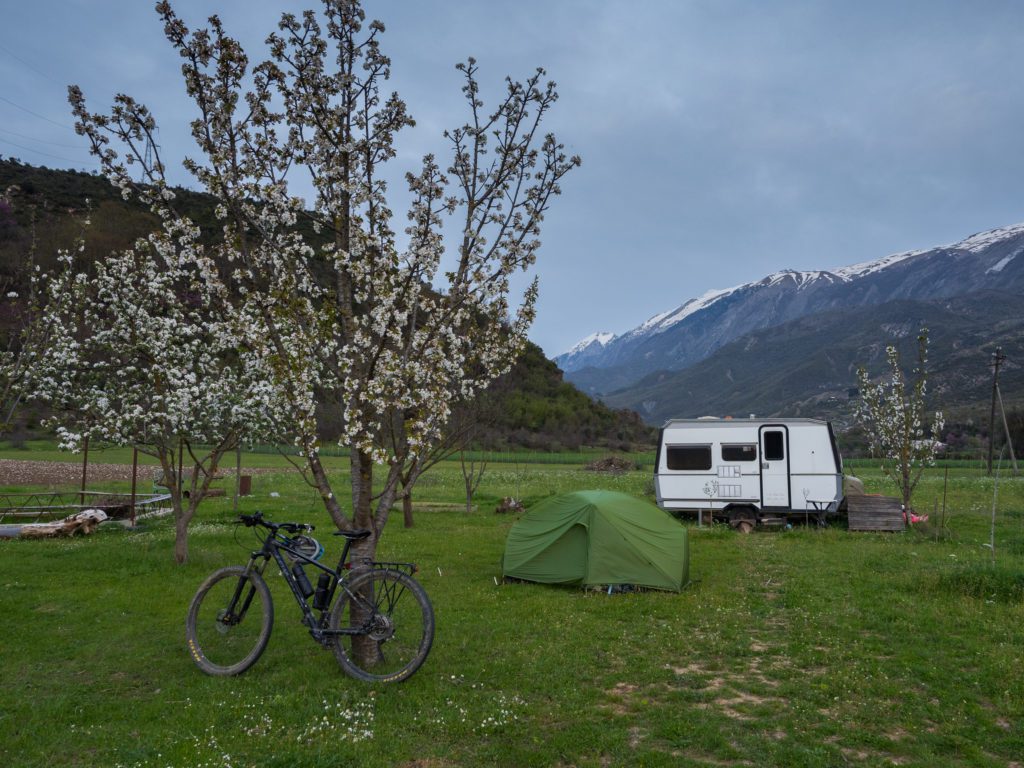
Bicycle touring is also a perfect way to stay fit while travelling. During “regular” trips, I sometimes feel sluggish and lack the motivation to squeeze in a morning run or a workout before sightseeing. But on a bicycle trip, the journey itself is a workout. My boyfriend was amazed at how much better he felt and how his cardio improved after only three days of cycle touring.
Cycling makes my body stronger and improves my mental well-being. It is like meditation. After a few kilometres, my thoughts slow down and create space in my brain to contemplate the world around me. Cycling gives me clarity and time to think about my life and teaches me to be alone with my thoughts without them feeling overwhelming.
Travelling by bike is also eco-friendly. Of course, it’s not entirely green, as I sometimes fly to the starting point of my trip, but it still reduces the pollution I would’ve emitted if I travelled by car or even public transit.
If you’re on a budget but already have a bike, you can have a fantastic adventure, even without travelling far from home. The world looks different from the saddle, so you might be surprised how many places in your country you haven’t even heard of that you can easily reach by bike.
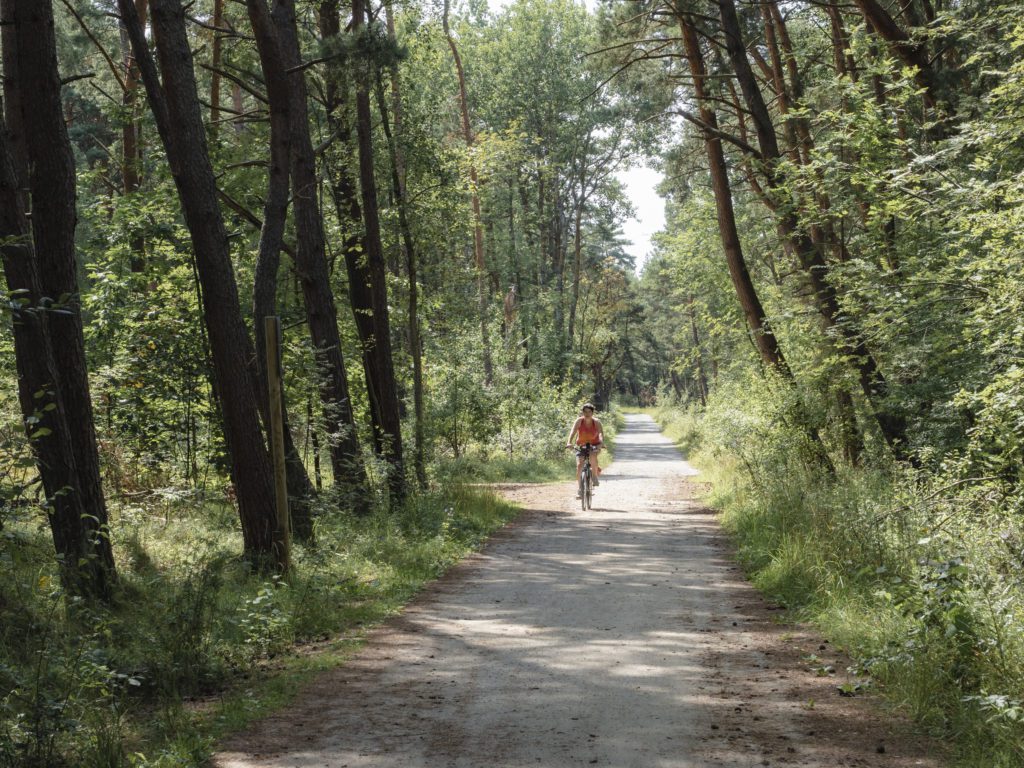
How to choose the right bike for travelling?
You’ll find two schools of thought in this regard: people telling you that the bike doesn’t matter and people telling you that you need to find the perfect bike to make your journey as pleasant as possible.
The truth lies somewhere in the middle.
Any bike you have can take you on an incredible adventure. However, the comfort and ease of cycling are entirely different on a good-quality bike.
You don’t need to get a touring bike for a cycle tour. Mountain bikes, gravel bikes, hybrid bikes, even folding bikes – they all can take you to beautiful places. In this post, you can find a summary of the pros and cons of different types of bicycles and some tips on what to pay attention to when choosing a bike.
Some of the most popular bikes for bicycle touring
 Kona Sutra
Kona Sutra
 Surly Disc Trucker, 700c (Pea Lime & Black)
Surly Disc Trucker, 700c (Pea Lime & Black)
Essential Gear and Equipment
Where to carry your luggage?
I remember the first time the thought of travelling by bike popped into my head. I was cycling with my backpack full of stuff I needed for a weekend at my parents’ place, looking at the sunset above a lake. Wouldn’t it be great to bike like this, from place to place, and see a sunset in a different location every day?
But the rational part of my brain said: how do you imagine carrying your luggage along? Your back is already aching, and you only have some clothes and a laptop in your backpack.
The same evening, I went to Google and learned about panniers—bicycle bags that you can attach to your luggage rack. They enable you to carry plenty of stuff without putting weight on your body.
I have written an article about choosing panniers for your bicycle tour, which you can find here.
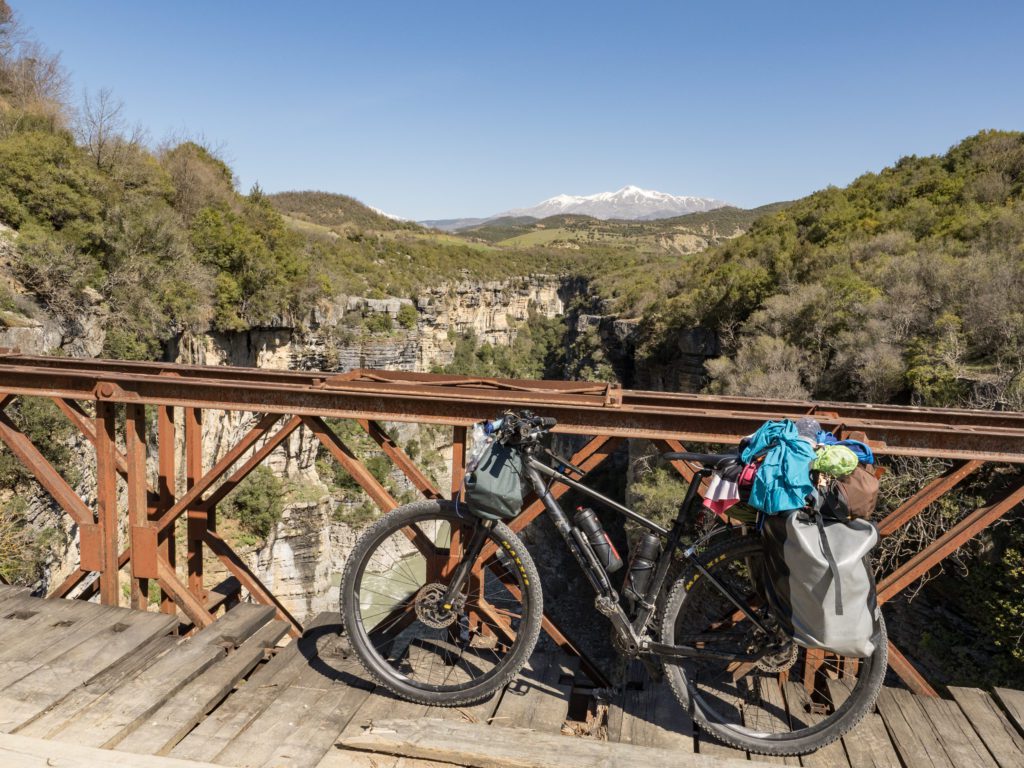
Another way to carry your luggage on a bike is bikepacking bags. They allow you to have a more even weight distribution on the bike. Another advantage is that you don’t need a luggage rack to use them.
However, they’ll give you less space for your stuff, so you need to be smart about what and how you pack.
What to pack?
I have written an article listing items I bring on a bicycle tour. You can read it here.
Of course, every trip is different. You’ll pack entirely differently for a 3-month-long journey, staying longer in places and doing activities off the bike than for a week-long off-the-grid adventure in the mountains.
Regardless of the type of trip and destination, here are some things I always carry with me:
- Rain jacket
- Sunscreen
- A spare inner tubes and patches
- A multitool with Allen keys for all the bolts in my bike
- Bicycle pump
- Zip-ties and duct tape – universal means to fix almost everything
- Power bank
- Water bottles (2)
- Padded cycling shorts – if your butt hurts after a few hours on a bike, good-quality padded cycling shorts can be a real game changer!
Packing Tips
- I am highly chaotic, and finding something in the depths of my panniers has been hell for many years. Recently, I discovered packing cubes—light and thin bags to put inside the backpack or pannier. They make it much easier for me to get organised, and stuff takes much less space!
- Find a system that allows you to remember what you have in which bag easily.
- Keep the things you might need during the ride on top of the pannier so you don’t have to go through your clothes, camping gear, and toiletries to find the rain jacket you suddenly need.
- Don’t overpack. Extra kilograms can weigh you down, especially on climbs.
- Leave some space for food and water.
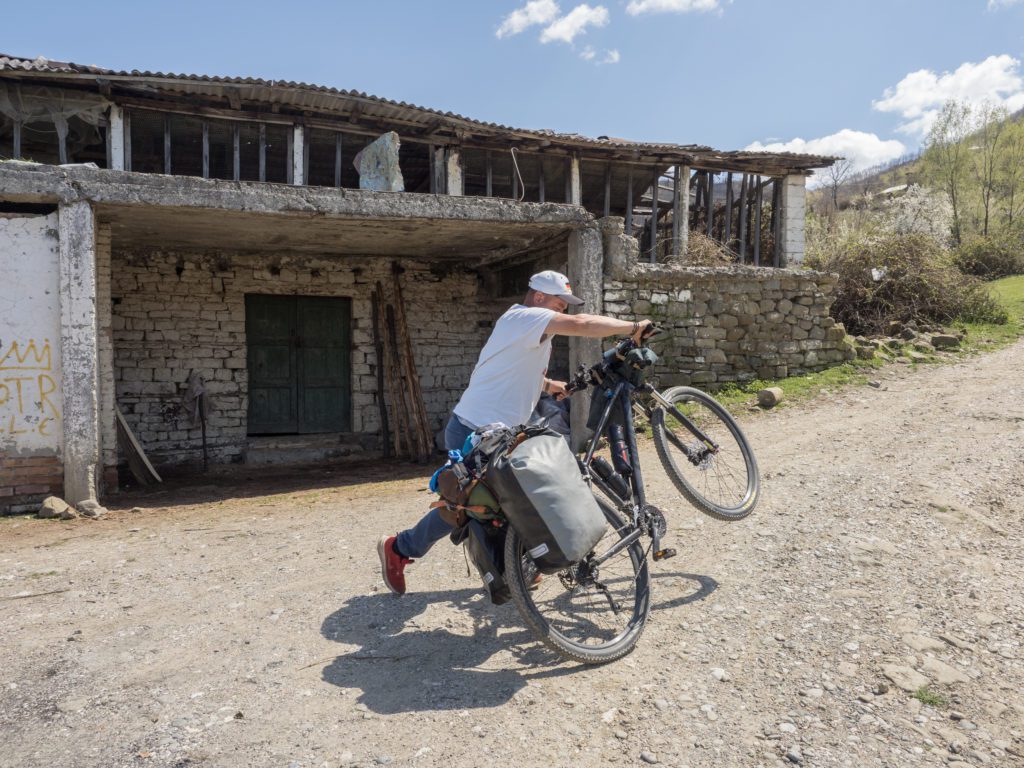
How do you plan the route of your first bicycle tour?
To me, planning is one of the most challenging aspects of cycle touring. Many question marks and variables make it hard to estimate how many kilometres a day you can cycle or which route is the best.
Check how far you can cycle in a day.
If you cycle regularly, you know the longest distance you can cover daily. Of course, you must consider the road type and elevation and give yourself some wiggle room.
If you’re not an avid cyclist, take a few bike rides to check what distance feels comfortable. If you’re going on a longer trip, you’ll get used to longer distances over time.
Before my first cycle trip through the Ukrainian Carpathians, I assumed I could cover between 80 and 100 km daily. I cycled regularly; a 100 km ride was my regular Sunday activity. Knowing that I had two weeks of holiday, I drafted a route of about 900 kilometres in case the challenging climbs, bad-quality roads, or the extra weight I carried would make the ride harder.
It was a perfect estimate. Despite muddy tracks, getting lost a few times, and unexpected obstacles, we finished the loop on time.
Ride your own ride
Don’t look at what other people do. You might feel pressured to be like the other hardcore adventurers going around the world on a 20 USD per day budget and wild camping every night, but you don’t have to travel by bike in a certain way.
For your first tour, you might want to choose a more established cycling route, like the Alpe Adria or Danube Cycle Route. If you aren’t excited about travelling solo, find other travellers with similar cycling plans. Or maybe wild camping isn’t your thing? No problem – it’s possible to travel by bike and stay in hostels, B&Bs or at WarmShowers.
Challenging yourself and getting out of your comfort zone is great, but it doesn’t mean that you necessarily need to get far away from that comfort zone. It’s your trip, and you set the rules.
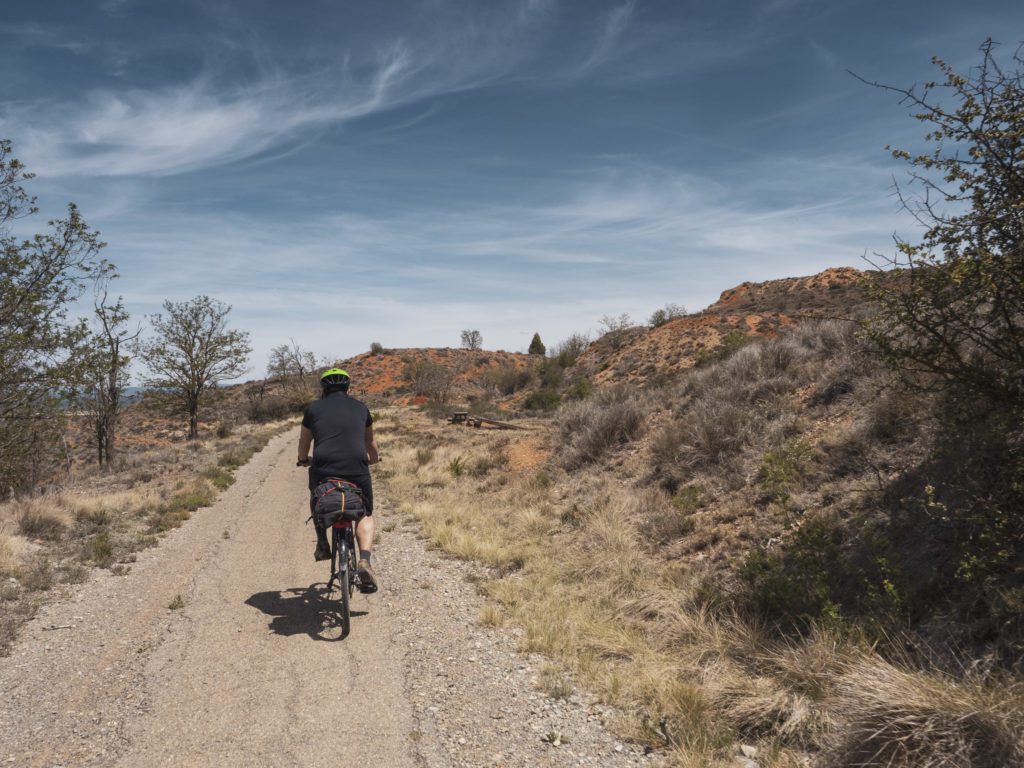
Tools to plan your cycling route
Forget about Google Maps for route planning on a bicycle tour. There are plenty of apps that are much better suited for that purpose.
One of the popular apps for cycle tourists is Komoot. It will help you find the best route from point A to B and give you valuable information, such as the percentage of various road surfaces and road types. I have described other route planning and navigation apps in this post.
A map alone does not tell you everything about the route. Sometimes, hundreds of questions storm into your head while planning your route, and Googling doesn’t give you the answer. In this case, it’s worth visiting Facebook groups or forums where more experienced cycle travellers gladly share their experience and wisdom. Find a list of such groups here.
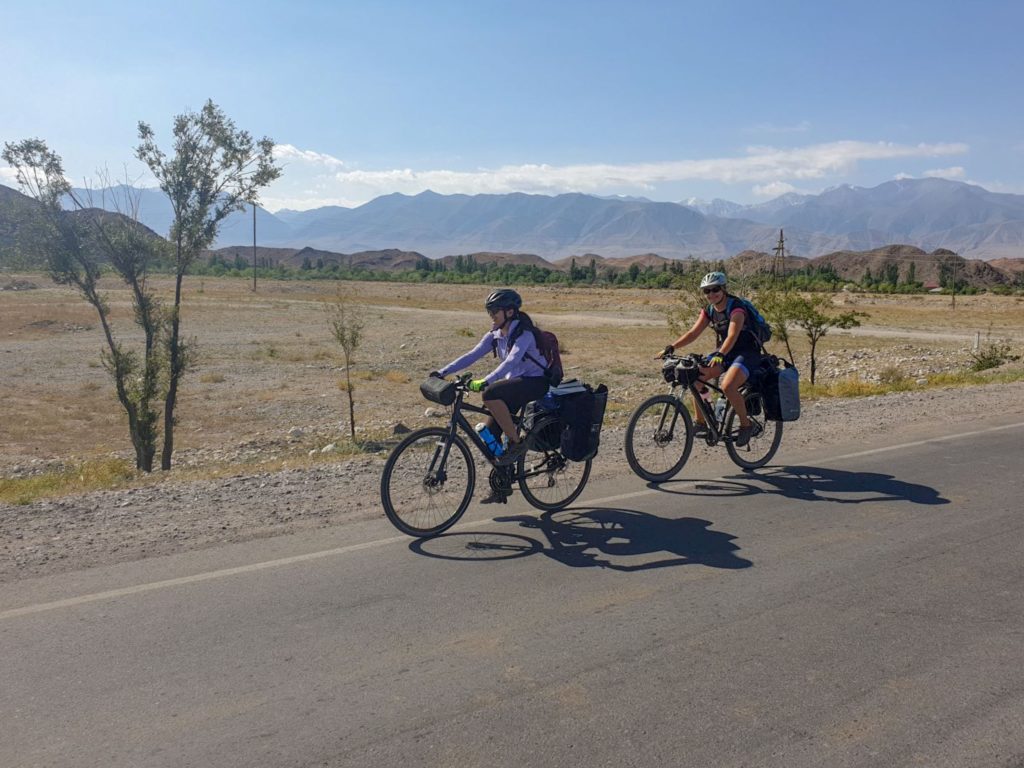
Here are some other online resources where you can find great cycle routes:
- Eurovelo.com – The European cycle route network Eurovelo consists of 17 routes that cross and connect European countries. On the website, you’ll find the route maps, information on taking bicycles on public transit in various countries and plenty of practical advice. Recently, they even launched a route planner, where you can type the start and destination, and the planner will draft a route for you. Just be aware that some Eurovelo routes are still under development.
- Bikesleepbike.com – A depository of bike touring and bikepacking blog posts. You can browse the website by country, route or style to find trip reports or guides for thousands of routes all around the globe.
- Bikepacking.com – If you’re more into cycling off the road and exploring the wildest corners of the earth on your bike, check out the routes on bikepacking.com.
Training and Preparation
How to train before a bicycle tour
People often assume that bicycle touring requires superhuman endurance and strength and that cycling hundreds of kilometres is reserved for the fittest athletic types.
In reality, most healthy and relatively fit people can travel by bike. And if you have a sedentary lifestyle and are far from good shape, you can still prepare your body for a bicycle tour. The easiest way to do it is by making cycling a part of your daily life – commuting to work or grocery shopping by bike is a great start. A little bit of strength training won’t hurt either.
I wrote an entire article about training for a bicycle tour. You can read it here.
Mental preparation
Your body is strong enough to cycle hundreds of kilometres, but your brain often tells you otherwise. Mental preparation before a bicycle tour is as essential as physical training. Before your trip, here are some things you can do to help you in a time of crisis during your adventure.
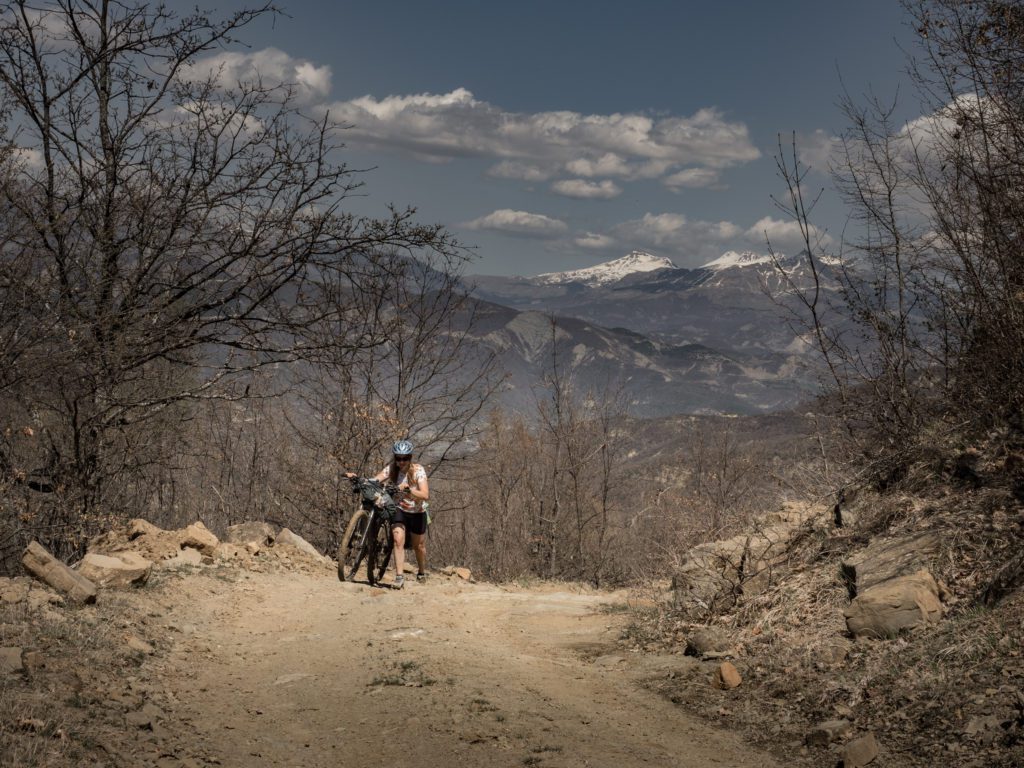
Set a realistic goal
I am a big fan of spontaneous and flexible trips, but for most people, having a specific goal is the best motivator. It can be anything, from a total distance you want to cover to a final destination you wish to reach or a list of locations you want to visit.
The goal needs to be realistic and feasible. Don’t compare yourself to others—find something that excites you, and let the thrill power your adventure.
Embrace the unpredictability
One thing bicycle touring taught me is that the best adventures are unplanned. While having plans and goals is great, sometimes you must ditch them because the situation forces you to or because you can get something better in return.
Follow your gut, and if an exciting new opportunity arises, don’t be afraid to deviate from your set route and let the adventure write itself!
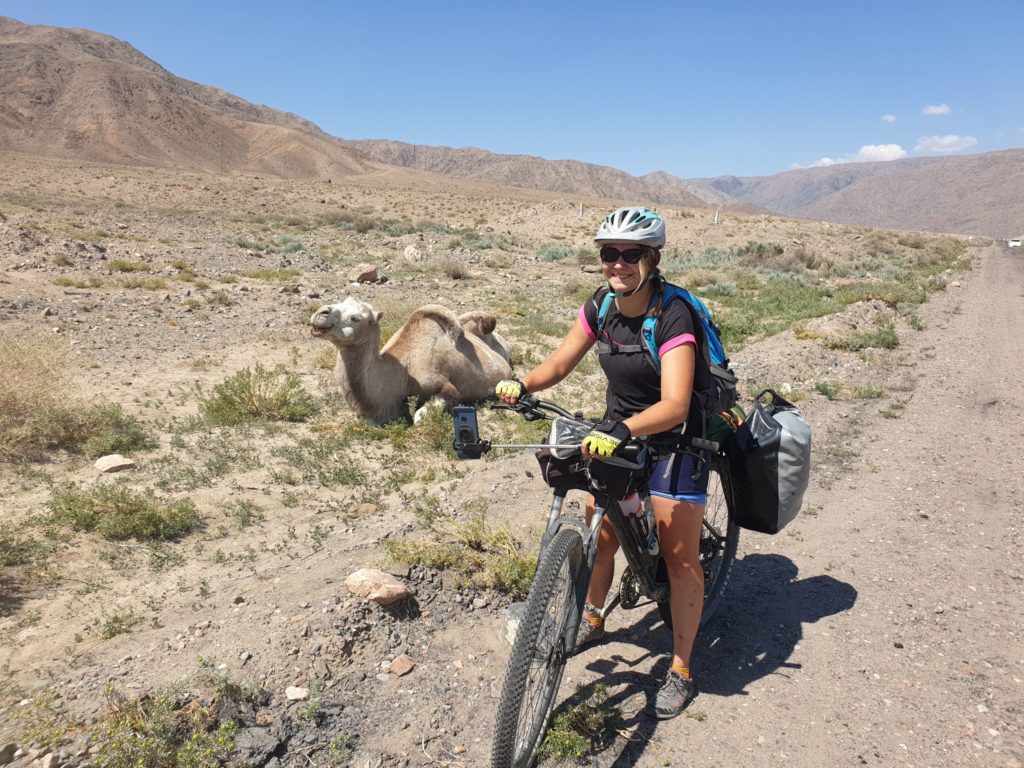
Prepare an emergency kit for a rough day
Part of the beauty of bicycle touring is that it’s full of ups and downs. Even a single day can be a rollercoaster of emotions, and it requires a lot of strength to persevere through the moments of resignation, pain, loneliness or frustration.
Prepare an emergency kit to help you survive rough days or moments. An energetic playlist, your favourite snack saved in your bag for this moment, a supportive note from a friend—simple things can make all the difference when a bike trip feels daunting rather than exciting.
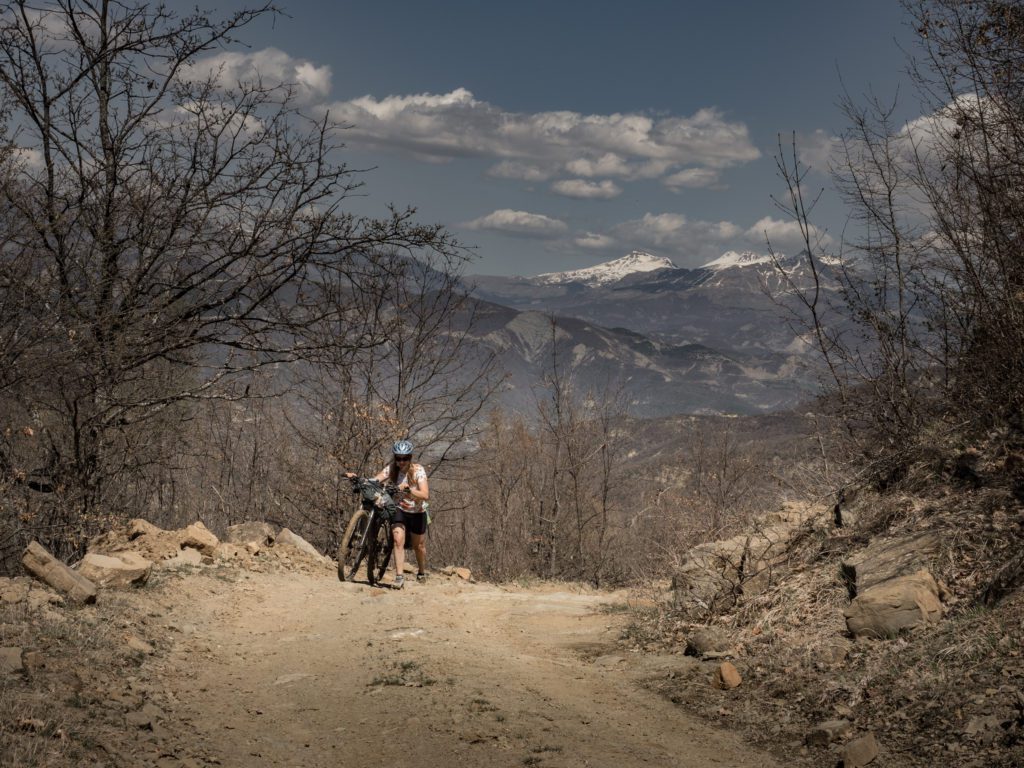
Bicycle mechanics and maintenance
Visiting your local bicycle mechanic is an essential step in bicycle tour preparation. Tell them about your plans and ask for a thorough bike check-up. Plan it well ahead of your trip in case some parts need to be replaced (sometimes the delivery of spare parts takes some time).
You don’t need to know all the ins and outs of bicycle repairs. The most crucial skill is certainly fixing a flat tyre. It is easier than you think, and you can find a great tutorial here:
If, after watching the video, you’re still trying to figure out how to replace the inner tube on your bike, ask your neighbourhood bike shop if they can give you a quick lesson.
If you’re planning a more extended tour, your brake pads will surely wear off at some point. You should monitor them frequently, especially after cycling in the mountains and braking frequently. You can either plan a stop at a bicycle shop along your route (carrying spare pads can be a good idea, as the bike shops don’t always have a particular type in stock) and let them replace the pads for you. Or you can learn how to do it yourself by watching this video for rim brakes
or this one for disc brakes:
If your bike has other issues during your trip and no bike shops are nearby, check out the ParkTool YouTube channel. They have hundreds of tutorials for various repairs on different types of bikes.
Staying Safe on the Road
Bicycle touring is no more dangerous than any other kind of travel. However, there are specific things you can do to avoid dangerous situations. You can find my tips for cycle touring safety here.
Finding Accommodation on a bicycle tour
Finding a place to sleep on a bicycle tour is a bit different than on a regular holiday. There’s more unpredictability, which can sometimes make it hard to book accommodation in advance.
Here are my tips on finding accommodation on a bicycle tour.
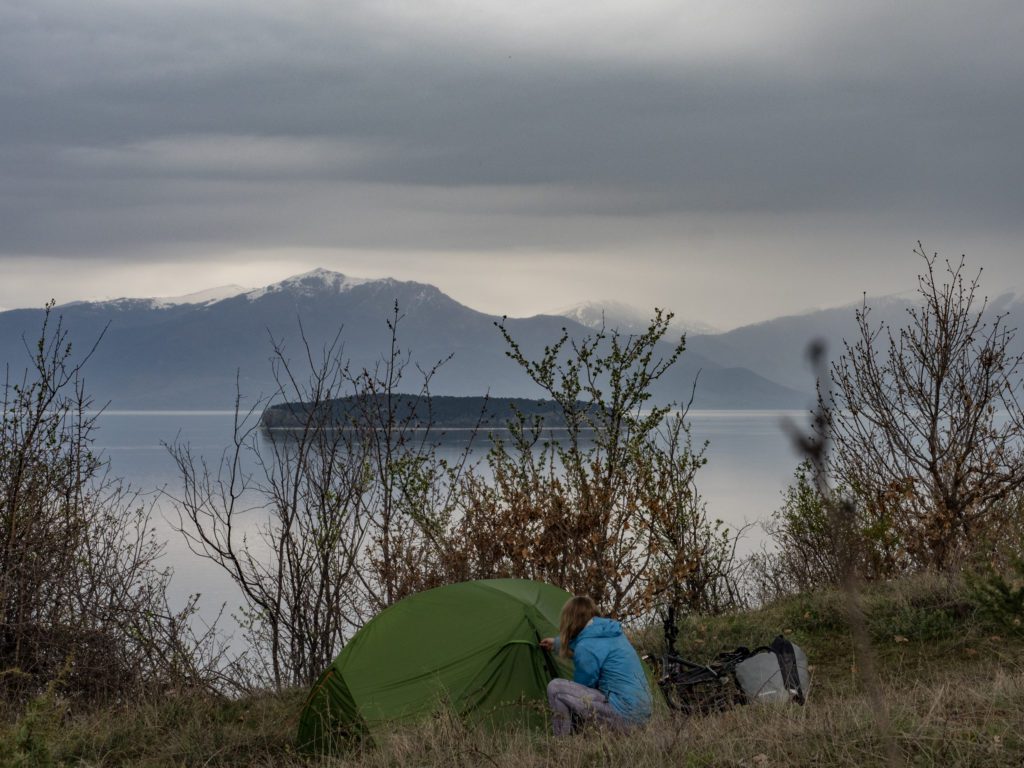
Budgeting for Your Tour
Some people know how much they plan to spend every day of their trip. They meticulously calculate and evaluate how much they’ll spend on food, spare parts, accommodation, sightseeing, etc.
I am a hopeless case when it comes to budgeting. I frequently underestimated how much I would spend on certain things and needed to remember about some expenses, but I learned a bit from my mistakes. If you need to figure out how much a trip is going to cost you, here are some things you need to factor in:
- Plane or train tickets to the starting point and/or the finish line unless you’ll be cycling from and to your doorstep.
- Accommodation. Decide if you’re going to wild camp, use WarmShowers, CoachSurfing or other hospitality communities and how often you want to stay in hotels, hostels or B&Bs. Add a sum for emergency accommodation for situations when you won’t be able to camp or stay at someone’s place.
- Transportation along the way. Is there any ferry crossing on your planned route? Remember to add the tickets to your budget. Put aside a sum for emergency transport in case of health issues or problems with your bike.
- Food. Check the average prices in the countries you’re travelling to and compare them to prices at home. Remember that you’ll be cycling a lot, so your body will crave more fuel, and you’ll probably need to spend more on groceries than at home!
- Travel insurance.
- Tourist attractions. Bicycle touring is more than just spending an entire day on a bike. You want to see something too!
- Spare parts and repairs.
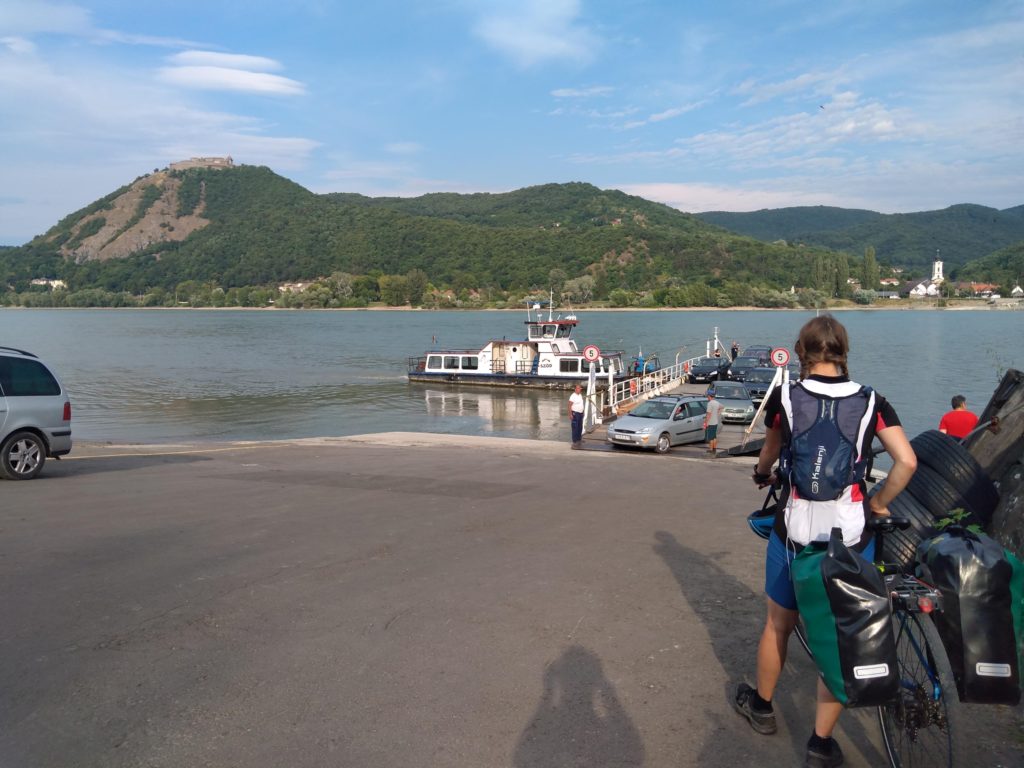
How can you cut costs during a bicycle tour?
- Travel with someone. Staying in a double room is always cheaper than a single room.
- Wild camp. Accommodation is one of the most significant travel expenses. If you stay in your tent, you’ll save money and have the unique opportunity to wake up surrounded by nature.
- Cook your meals. The camping stove and pots might add extra weight to your luggage, but cooking your meal is much cheaper than eating in restaurants! Of course, you can occasionally make an exception to taste local cuisine.
Embracing the Journey
The only sure thing about bicycle touring is that there will be plenty of unexpected things. There is no way you can prepare for everything that can happen. The only way to deal with the surprises is to embrace them.
I remember the day before my first solo bicycle trip (and I had the same thoughts many times again before my following journeys). My brain was full of what-ifs. What if my bike or my tent breaks down? Or if I get injured? What if I cannot find a place to sleep?
Many things I dreaded happened to me at some point on my trips.
In Bosnia, I screwed up my knee, and I cycled 250 kilometres with a broken meniscus, only to realise that I won’t be able to carry on and have to cancel the rest of my trip. What seemed like a failure then was a valuable lesson and an opportunity to spend more time in beautiful Sarajevo.
In the Pindus Mountains in Greece, after cycling a long stretch in scorching heat with little water, I was panicking that I wouldn’t be able to find a camp with a water source. On top of that, I was freaking out because everywhere I wanted to set camp, I was finding footprints of bears. Suddenly, a white van passed me, and a lovely couple of German retirees offered me a bottle of delightfully cold water. I ended up camping next to them and sharing a magical dinner, observing the blinking lights of fireflies.
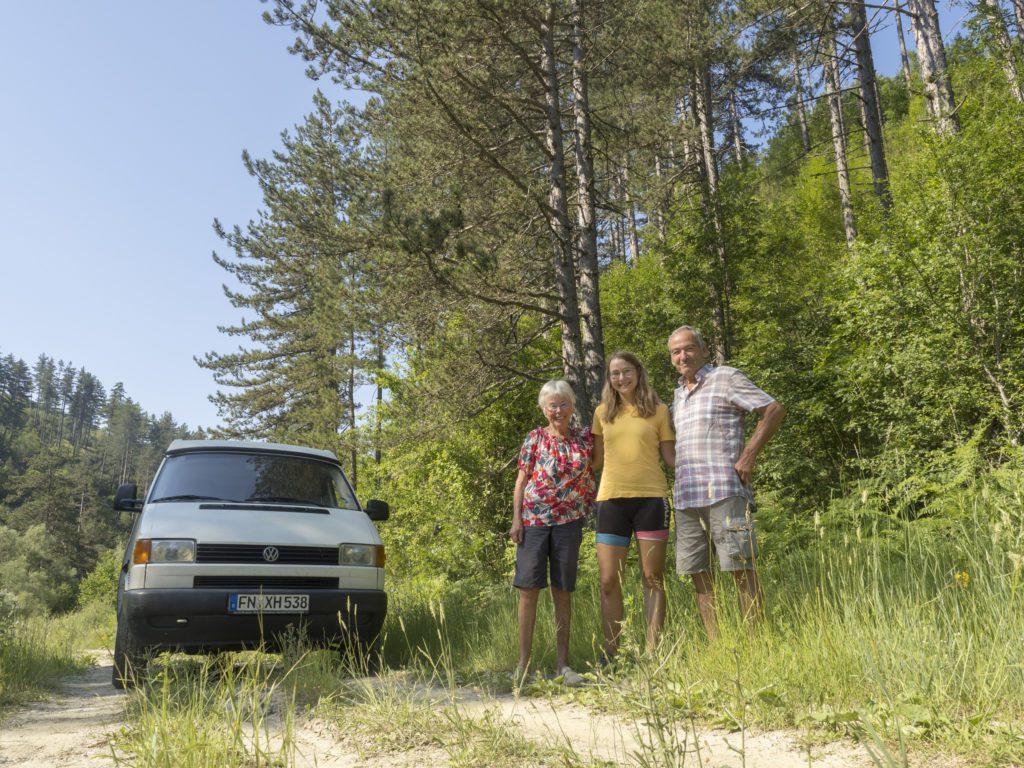
In Kyrgyzstan, my tent broke down. I had to improvise to have shelter over my head and was convinced that the next weeks of my trip were in jeopardy. I was lucky—another cycle traveller, Roberto, who had a similar issue, found spare poles in Bishkek and sent them to me in Karakol. Because of the tent situation, I had a great excuse to stay longer in a hostel, rest properly, and meet great people, some of whom I am still good friends with.
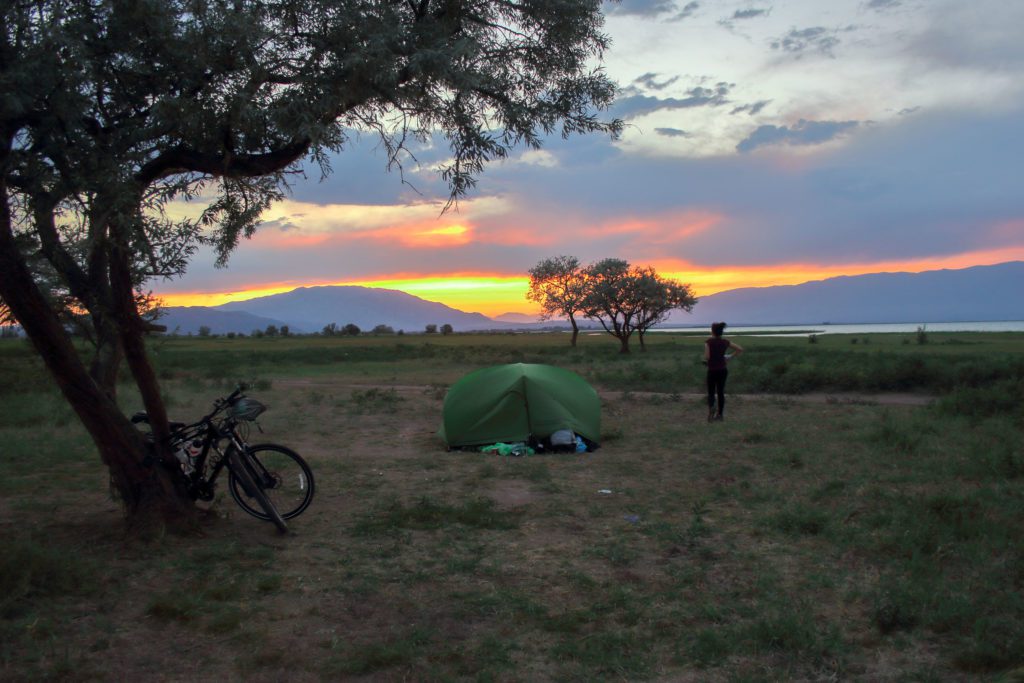
All the situations that seem terrifying from the comfort of your home suddenly become manageable once you face them.
It’s normal to feel fear. Even after six years of bicycle touring, I still get a massive reisefieber the day before. Just do it, scared.
Need inspiration? Here are some cycle travellers you should follow!
Cycloscope: a couple of travellers who have been travelling by bike and living a digital nomad life since 2014. You’ll find plenty of great advice and cycle routes on their blog, as well as inspiring photography and captivating stories.
Universe with me: Jin has a fantastic YouTube channel on which she documents her solo cycling adventures around the world, showing the good, the bad and the ugly of bicycle touring.
Belen Castello: if you’re looking for gear advice, great photography and inspiration, Belen’s Instagram is the place to go.
Lostcyclist: an Instagram account run by a Swedish traveller, Lars Bengtsson, who has already covered 114,000 kilometres by bicycle.
Final words
Bicycle touring might not be the easiest way to travel, and bicycle touring alone certainly isn’t. But it’s one of the most rewarding ways to explore the world. Let the bicycle take you to places you would never visit otherwise.
Are you preparing for your first bicycle tour? Post your questions in the comments; I’ll be happy to help!
